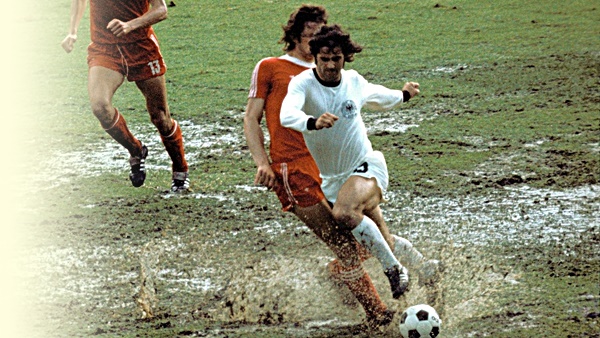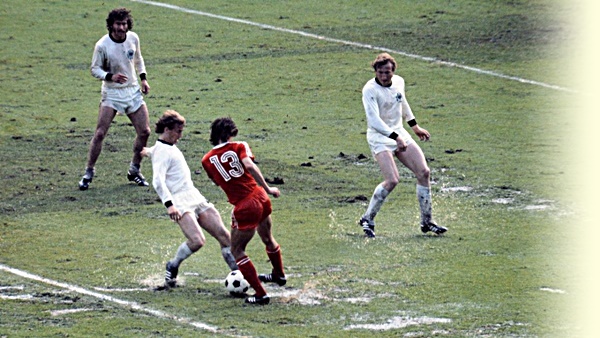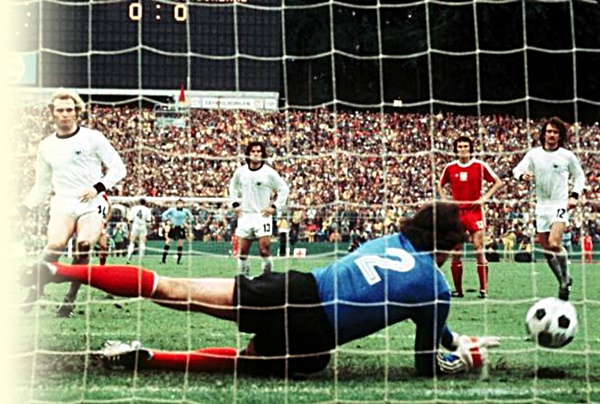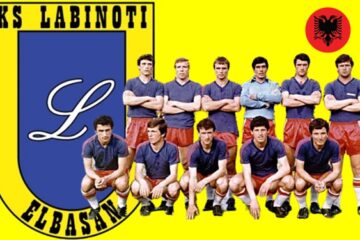(1974) | “Der Wasser Schlacht von Frankfurt” – The Water Battle of Frankfurt.

Welcome to our column: “The Ball Narratives”, in different sporting events with no similarities to each other! And this is Sports Vision + / The Hour of The Champions with no similarities to other sports page!
In this article below, we will talk about the water battle in the World Cup of 1974….
On July 3, 1974, one of the most unique matches in World Cup history was played at the “Wald Stadion”: the semi-final between West Germany and Poland, which went down in history as “Der Wasser Schlacht von Frankfurt” – The Water Battle of Frankfurt.
West Germany, the hosts, reached this challenge after a tortuous path. The tournament had a rocky start, affected by disputes over player compensation and mixed performances. The defeat to East Germany in the group stage had tested coach Helmut Schön, almost bringing him to the brink of a nervous breakdown.
However, this setback proved paradoxically beneficial, acting as a spark to rekindle the team’s pride. On the other side was a Poland in a cosmic state. Led by the genius of Kazimierz Deyna and the speed of the “bald” Grzegorz Lato, the red and white national team had won all five matches played up to that point: Argentina, Haiti, Italy, Yugoslavia and Sweden.
The two teams were tied in the standings with 4 points each in the second stage group, but the favorable goal difference allowed the Germans to qualify even with a draw. However, for the Poles, the only option was victory.
In the days leading up to the match, Frankfurt was hit by torrential rains that turned the Wald Stadion pitch into a quagmire.

The situation was so critical that it questioned the very possibility of the match. On the day of the match, the authorities faced an unprecedented challenge. Dozens of workers, firefighters and volunteers were mobilized in a race against time to make this field ready for the match.
Armed with hydraulic pumps, rollers, brooms and any tool that might come in handy, they worked non-stop for hours trying to drain the excess water. These scenes, today virtually unimaginable thanks to modern drainage systems, entered the collective imagination as a symbol of a match destined to go down in history.

Ironically, when the teams took the field, a bright sun lit up the stadium. But the damage was already done, large parts of the field were reduced to large puddles, ready to test the players’ skills and balance.

The match that took place that afternoon was a perfect example of how football can turn into a unique spectacle when faced with extreme conditions. The players were seen facing not only their opponents but also a pitch that seemed to have a life of its own.
The first half saw an attacking Poland, determined to exploit the speed of its wingers, Lato and Gadocha.
However, the heavy terrain limited their effectiveness, forcing them to fight the mud with every acceleration. It must be said that German goalkeeper Sepp Maier made a series of crucial saves, keeping his team on their feet. The images from that match are impressive: players gliding in motion raising masses of water, balls stopping suddenly in deep puddles and surreal fights that involve four or five athletes fighting for possession in borderline conditions.


Germany, playing in an all-white uniform, waited patiently for their moment.
In the second half, Schön’s side began to gain the upper hand, taking advantage of their greater physicality to better adapt to the stifling pitch conditions.

The key moment came when Bernd Hölzenbein was brought down in the box by Wladyslaw Zmuda, winning a penalty. However, Uli Hoeness’ shot, without conviction, was easily saved by the charismatic Polish goalkeeper Jan Tomaszewski, already a hero in the famous qualifier against England at Wembley.

When there were 15 minutes left, came the moment that decided the match and in fact the World Cup.
Hölzenbein managed to find space in the midfield and served a precise ball to Rainer Bonhof, who had escaped the mark of the Polish defenders. Bonhof, struggling to keep his balance in the mud of the penalty area, managed to serve Gerd Müller. “Der Bomber”, with his goalscoring instinct, found a way to put the ball behind Tomaszewski, scoring what would be his thirteenth goal in a World Cup.



That goal not only took Germany to the final (where they would later beat Cruyff’s Holland), but also marked the end of a dream for what is remembered as the strongest Polish national team ever.
The semi-final at the “Wald Stadion” remains a unique chapter in football history. It represents an era in which weather conditions can still play a decisive role even in the most important international scenes, creating situations bordering on the surreal that today, with modern systems and technologies, would be unimaginable. The footage of that match continues to hold a special fascination for fans. There is something epic about those players fighting not only against their opponents but also against the elements of nature.
For Germany, it was the moment when the team finally came together, overcoming initial difficulties and finding the strength to go on to win the world title. For Poland, it represented the pinnacle of a golden streak that would never be able to reach similar heights in later competitions.
By Pjerin Bj
© Alright Reserved | The Exclusivity on this page holds the date :10-02-24
___________________
Sports Vision + / The Hour of The Champions in activity since 2013
Photos are from Google. If you have any issues on the photos, please let us know before. Thanks!
Discover more from Sports Vision +
Subscribe to get the latest posts sent to your email.












